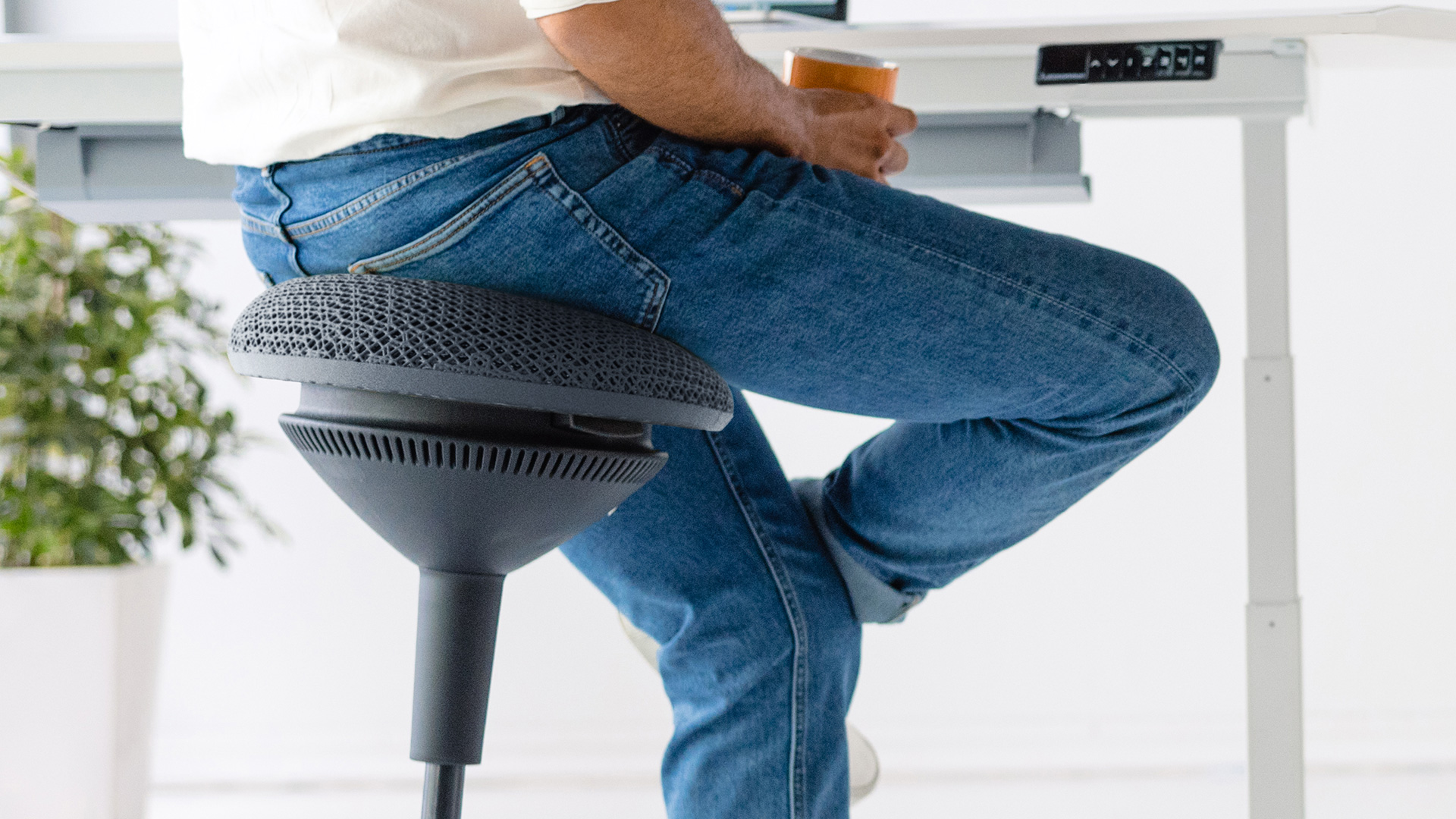
Table of Contents
- 1. Use an Active Sitting Chair
- 2. Incorporate Seated Exercises
- 3. Adjust Your Posture Regularly
- 4. Engage Your Core While Sitting
- 5. Use a Footrest or Balance Board
- 6. Take Frequent Micro-Breaks
- 7. Utilize Under-Desk Equipment
- 8. Stay Hydrated to Encourage Movement
- 9. Optimize Your Desk Setup for Movement
- FAQs
- Conclusion
Sitting at a desk for long hours can take a toll on your body, leading to stiffness, poor circulation, and even long-term health risks. If you have a sedentary job, staying active throughout the day is crucial for maintaining energy, focus, and overall well-being. The good news? You don’t need a full workout to keep your body engaged. By using the active sitting method and incorporating small movements, you can improve posture, reduce strain, and keep your muscles engaged—all while staying seated.
1. Use an Active Sitting Chair
Traditional office chairs encourage static sitting, which can lead to back pain and poor posture. Switching to an active sitting chair—such as a wobble stool, balance ball, or kneeling chair—promotes micro-movements that keep your core and back muscles engaged. These chairs encourage active sitting techniques, helping to reduce strain and improve circulation without requiring conscious effort.
2. Incorporate Seated Exercises
One of the easiest ways to stay active at your desk is by adding simple seated exercises to your routine. These small movements help keep your muscles engaged and prevent stiffness:
- Leg lifts: Extend one leg at a time and hold for a few seconds to strengthen your quads. Learn more about seated leg lifts in a chair for added benefits.
- Ankle circles: Rotate your ankles to improve circulation and reduce stiffness.
- Seated marches: Lift your knees alternately to activate your core. If you're looking to target your midsection, check out these office chair exercises for belly fat.
- Shoulder rolls: Relieve tension by rolling your shoulders forward and backward.
- Neck stretches: Gently tilt your head from side to side to reduce stiffness.
For those looking to add variety to their routine, try these chair exercises for the upper body or chair exercises for weight loss to keep your body engaged throughout the day. If you use a sit-stand desk, incorporating standing desk exercises can help balance your movement while working.
These movements are subtle enough to do while working but effective in preventing stiffness and keeping your energy levels up.
3. Adjust Your Posture Regularly
One of the biggest challenges of a sedentary job is maintaining good posture. Even with the best ergonomic chair, it’s easy to slouch over time. The key is to change positions frequently:
- Sit back against your chair with your feet flat on the floor.
- Keep your monitor at eye level to avoid hunching forward.
- Shift your weight from side to side every few minutes.
- Alternate between leaning slightly forward and sitting upright to engage different muscles.
These small adjustments prevent stiffness and help maintain proper spinal alignment.
4. Engage Your Core While Sitting
Your core plays a key role in posture and stability, and you can keep it active even while seated:
- Pelvic tilts: Gently rock your pelvis forward and backward to engage your lower abs.
- Seated abdominal contractions: Tighten your core muscles for a few seconds, then release.
- Posture check-ins: Imagine a string pulling you upward from the top of your head to keep your spine aligned.
These techniques help build core strength without requiring extra time or effort.
5. Use a Footrest or Balance Board
A footrest can help keep your legs active by encouraging subtle movements, reducing pressure on your lower back, and improving circulation throughout the day. If you’re looking for extra comfort while seated, an office chair with a footrest allows you to shift positions easily and reduce strain on your legs.
For those who prefer more dynamic movement, a balance board is a great addition to your workstation. Placing one under your desk encourages small weight shifts, keeping your lower body engaged even while standing or sitting.
If you’re looking for a simple way to elevate your ergonomic setup, an office footrest can support better posture and prevent stiffness by allowing natural movement throughout the day. These tools are an easy way to incorporate more activity into your desk routine without disrupting your workflow.
6. Take Frequent Micro-Breaks
Even if you stay active while sitting, standing and stretching are essential for preventing fatigue. Follow these simple habits:
- Stand up and stretch every 30 to 60 minutes.
- Follow the 20-20-20 rule: Every 20 minutes, look at something 20 feet away for 20 seconds to reduce eye strain.
- Walk around your workspace for a minute or two to reset your posture.
These breaks don’t just help with physical health—they also boost focus and productivity.
7. Utilize Under-Desk Equipment
If you want to add more movement to your routine, under-desk equipment can help:
- Pedal exercisers or mini ellipticals keep your legs moving while working.
- Resistance bands can be used for seated arm or leg exercises.
These options provide ways to stay active at your desk without disrupting your workflow.
8. Stay Hydrated to Encourage Movement
Drinking plenty of water throughout the day helps keep you energized and encourages movement. A simple trick is to keep a water bottle at your desk and refill it frequently—this naturally forces you to take walking breaks while keeping you hydrated.
9. Optimize Your Desk Setup for Movement
Your workspace layout can encourage movement and reduce the strain of prolonged sitting. Placing frequently used items—like your phone, notepad, or printer—slightly out of reach prompts you to stretch and shift positions naturally. A standing desk allows you to alternate between sitting and standing, promoting better circulation and reducing fatigue. If you’re looking to expand your workspace, a standing desk extension can help customize your setup for better ergonomics.
To maximize the benefits of a standing desk, follow how to use a standing desk to ensure proper posture and movement throughout the day. Pairing your workstation with a high-quality ergonomic chair helps maintain comfort while seated. If you experience lower back discomfort, an ergonomic chair for back pain can provide the necessary support.
For added flexibility, an ergonomic chair with a leg rest allows you to shift positions and reduce pressure on your legs. If you’re incorporating active sitting techniques, an ergonomic stool for a standing desk encourages core engagement and posture changes, keeping your body in motion even while seated.
/https://storage.googleapis.com/s3-autonomous-upgrade-3/static/upload/images/product/galleries/22.59-ErgoStool_B-1584091802842.jpg)
Autonomous ErgoStool
| Dimensions | 13”L x 13”W x 25” - 35”H |
|---|---|
| Seat dimensions | 13”L x 13”W |
| Seat height | 25” - 35” |
| Range of motion | 30° |
| Adjustability | Seat height |
| Materials | Polyester fabric with molded foam interior and durable nylon plastic frame. |
| Certification | UL 2818 - 2013 Gold Standard for Chemical Emissions for Building Materials, Finishes and Furnishings. |
| Colors | Navy Blue, All Black, Cool Gray, Evergreen |
| Weight capacity | 270 lbs |
| Item weight | 22 lbs |
| Shipping dimensions | 53”L x 37.5”W x 33”H x 26 lbs |
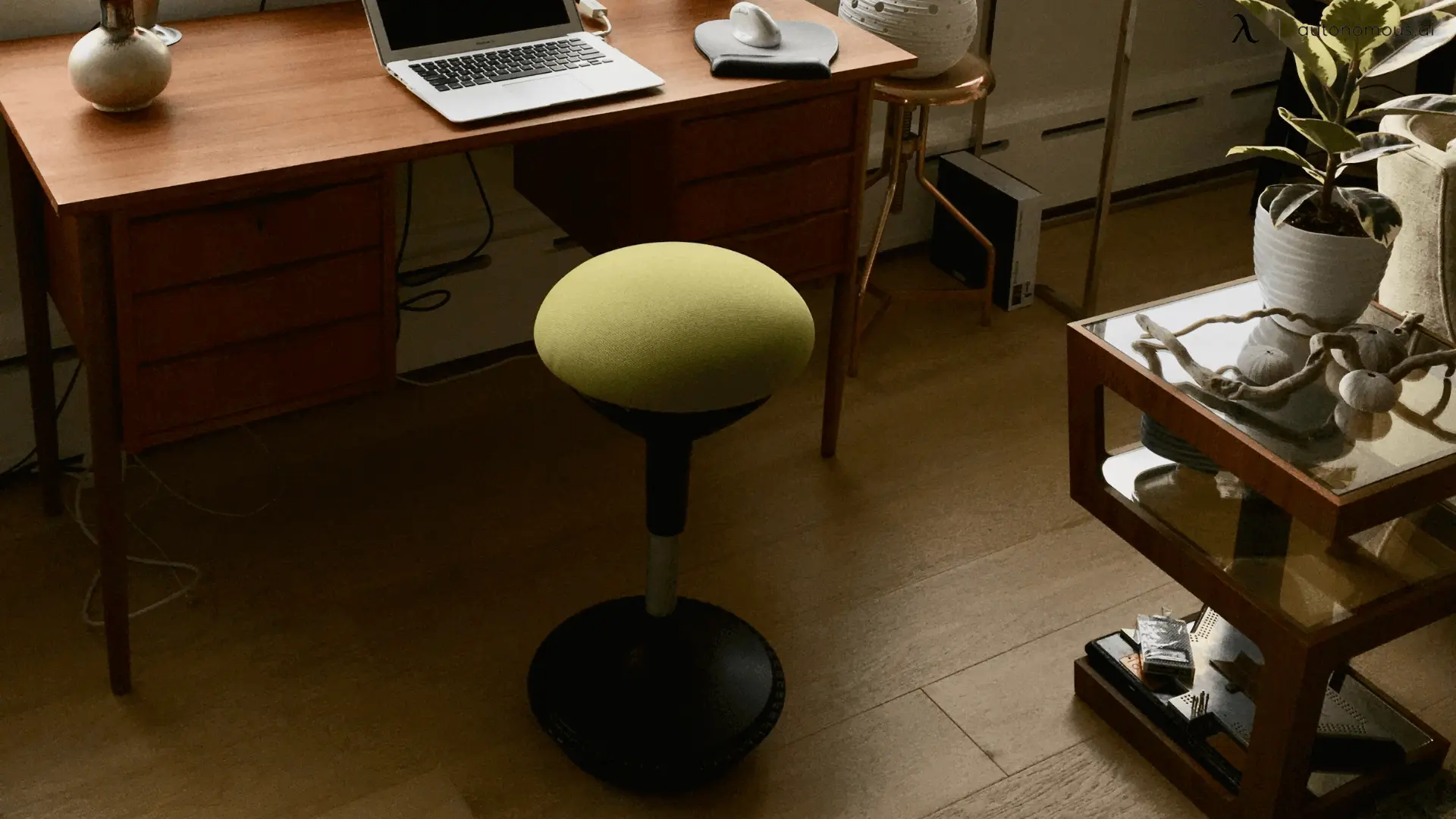
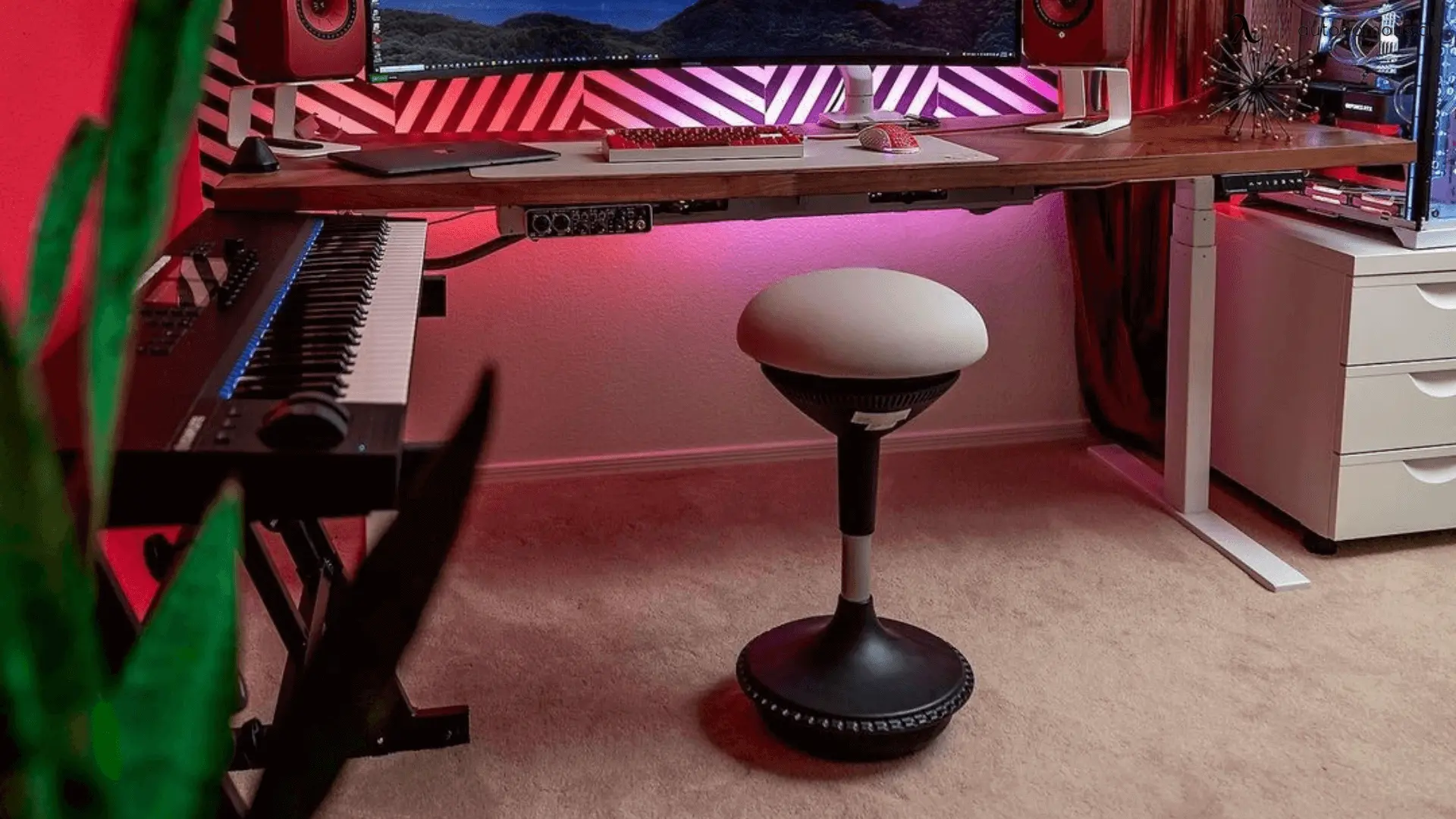
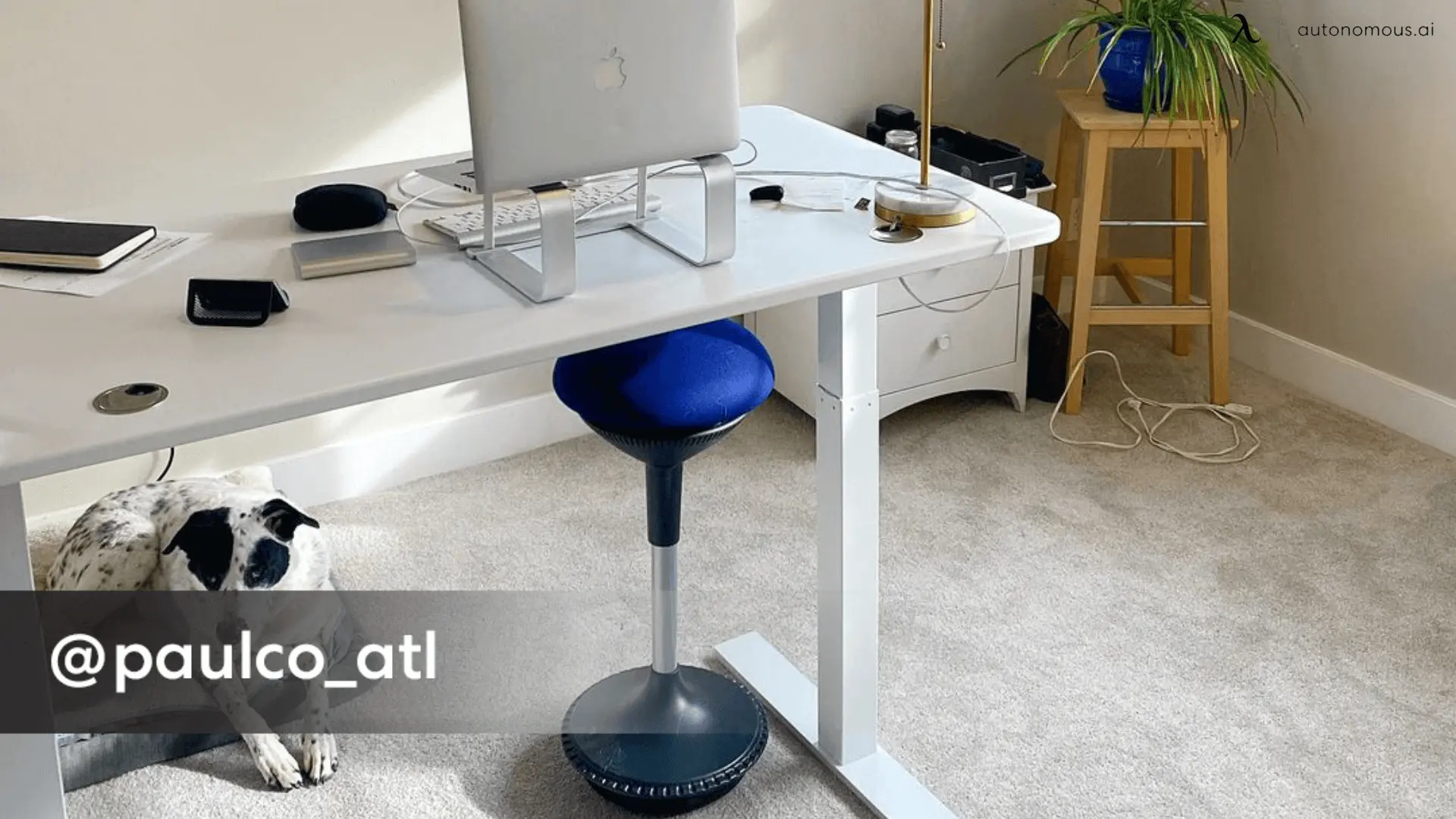
FAQs
Can fidgeting at my desk help me stay active?
Yes! Small, unconscious movements like tapping your foot, shifting in your seat, or lightly bouncing your knees can help improve circulation and burn extra calories. These micro-movements contribute to active sitting without disrupting your workflow.
How does prolonged sitting affect my metabolism?
Sitting for long periods slows down metabolism, which can lead to weight gain and increased risk of metabolic disorders. Even small movements or standing periodically can help keep your metabolism more active throughout the day.
Can using a massage cushion help with circulation?
Yes, a massage cushion or lumbar support with vibration can help improve blood flow, reduce stiffness, and provide relief for lower back tension caused by prolonged sitting.
What’s the best type of flooring for an active desk setup?
If you use a balance board or an under-desk cycle, softer flooring like a standing mat or carpet can help with stability and comfort. Hard surfaces may make balancing more difficult or cause discomfort over time.
Does listening to music help encourage movement at my desk?
Yes! Upbeat music can naturally make you move more, whether it’s tapping your foot, shifting your posture, or even stretching while seated. It can also help improve mood and focus.
How can I stay active if I share an office space?
If you work in a shared or quiet office, opt for discreet movements like seated stretches, subtle core engagement, or using a footrest for small shifts in weight. You can also take quick standing breaks in a less disruptive way by adjusting your chair height periodically.
Can drinking coffee instead of water help with staying active?
While coffee can give you a temporary energy boost, it doesn’t provide the same hydration benefits as water. Dehydration can lead to fatigue, making you less likely to move. If you drink coffee, balance it with enough water throughout the day.
How do standing desks compare to active sitting?
Standing desks reduce prolonged sitting, but they don’t necessarily encourage movement unless paired with accessories like a balance board or foot rocker. Active sitting, on the other hand, keeps you engaged even while seated, making it a great alternative for those who can’t stand all day.
What’s the ideal work-to-movement ratio for desk workers?
A good guideline is 30 minutes of sitting, followed by 5 minutes of movement, or at least one movement break every hour. The more variety you add—standing, stretching, shifting posture—the better for your overall health.
Are there any wearables that can remind me to stay active?
Yes! Smartwatches and fitness trackers often have reminder features that prompt you to stand up or move if you've been inactive for too long. These can be helpful for staying mindful of your activity levels during the workday.
Conclusion
Staying active in a sedentary job doesn’t have to be complicated. With small adjustments like active sitting, seated exercises, and regular posture shifts, you can keep your body engaged and reduce the negative effects of prolonged sitting. Simple habits—like using a balance chair, taking micro-breaks, or adding under-desk equipment—can make a big difference in your overall health and energy levels. By making movement a natural part of your workday, you’ll feel better, stay more focused, and improve your long-term well-being.
Get exclusive rewards
for your first Autonomous blog subscription.
You May Also Like


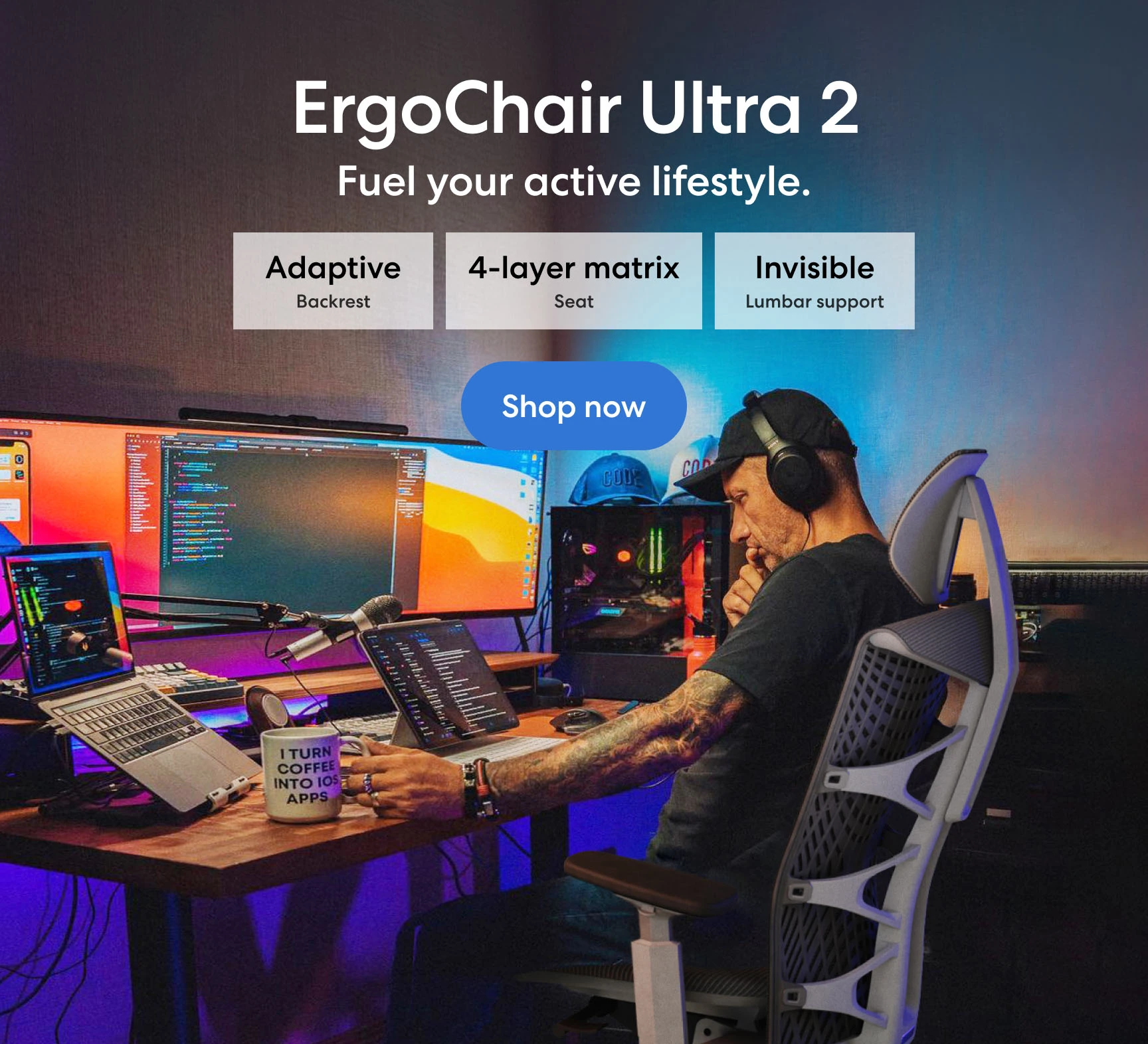



-7512dd9e-3510-42ed-92df-b8d735ea14ce.svg)


